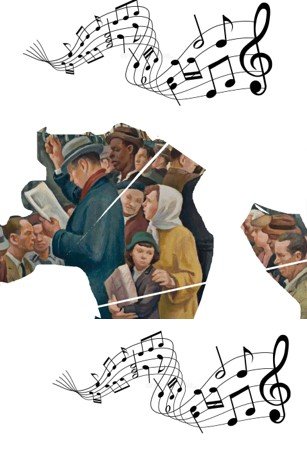Book Review: The Good Hand
John Lepley reviews “The Good Hand.”
Lepley is a labor educator in Pittsburgh, Pennsylvania. From 2006-2008 he was a recipient of the Gertrude and Theodore Debs Memorial Fellowship in the graduate program in labor and social reform movement history at Indiana State University in Terre Haute, Indiana.
Book Review: The Peacemaker’s Path
Charlie Wiles reviews “The Peacemakers’s Path.” Wiles is the founder and executive director of the Indianapolis based Center for Interfaith Cooperation.
Insurgent Publishing for the Resistance
Timothy Sheard of Hardball Press writes about the importance of small presses, editing, and promoting working class social movements for positive change.
New York City’s Composers’ Collective: “Left-Wing Fool’s Paradise”or “American Musical Genesis”?
In response to the growing unemployment and social misery of the early Depression years, the Composers’ Collective, founded in 1932–1933 in New York City, sought to make a social and political impact. Laying out the collective’s theoretical and ideological ambitions, this article highlights the organization’s initial agenda of political education and mass mobilization through avant-garde classical music. These efforts shifted as the collective’s members realized that their outreach efforts were failing, and they changed their focus from classical avantgarde music to folk music. This article argues that despite its short existence (1932–1936), the collective fostered a theoretical discourse about the political significance of music that influenced the later works of former members (e.g., Marc Blitzstein, Earl Robinson) a new generation of political musicians (e.g., Pete Seeger), and exemplifyied the important role music could play in America’s political stage.
Behind the Curtain: Popular Culture Roots of the Alternative Right in the Euro-American Realm
“Although “we like to assume that the arc of history will bend inexorably toward justice,” this may be “wishful thinking,” for “unmediated social media” has modified language, and our understanding of “who we are.”[18] QAnon, the spokes site for the anonymous poster, Q, has become the most popular purveyor of these restructured and repurposed anti-Semitic myths, which in their new form have been popularized on Fox News and by Trump (and his administration). According to the followers of the anonymous Q, “the criminals are also known as the Deep State, or cabal, because of how they control things behind the scenes.”[19] The criminals are represented in the United States by William Jefferson Clinton, Hillary Rodham Clinton, George H. W. Bush, George W. Bush, and most especially Barack Hussein Obama. For Q and his followers, the only heroic American figures fighting the criminal elite were Ronald Reagan and Donald Trump.”
2022 Artist in Residence: Photo Essay
Every year NMR works with a selected artist as the featured artist of the journal. In 2022, NMR’s artist in residence is Iridessence/Essence Walker, and her project is a photo essay that explores race, fatness, and beauty.
Poetry: “Untitled” by Ricardo Quintana-Vallejo
“Untitled,” a poem by Ricardo Quintana-Vallejo



















